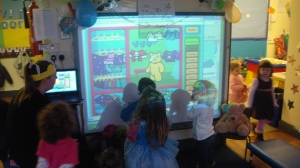As digital natives, younger generations rely heavily of technology and cannot see a world without it. With this mentality, it has become evident that although technology has its benefits, there are also many cons. Cyber bullying is one of these cons, and has been on the increase with each passing year. What is cyber bullying exactly? One may ask… It is simply the misuse of communication technologies where one person sends deliberate hurtful messages and images to another person. The result of such actions can go so far as to be taken to court for trial. With facts such as:
- Nearly 43% of children have been bullied online
- 81% of young people think bullying online is easier to get away with than bullying in person.
- Only 1 in 10 victimes will inform a parent or trusted adult of their abuse.
- Girls are about twice as likely as boys to be victims and perpetrators of cyber bullying.
(http://www.dosomething.org/tipsandtools/11-facts-about-cyber-bullying)
Shouldn’t there be more action taken so as to stop it? What drives someone to virtually harass someone with the protection of being anonymous? If people created the internet and built a community, why can’t the same people take measures to minimize and eventually delete cyber-bullying from existence?
Visit below Cybersmart for more information, and games about cyber awareness!

Recent Comments